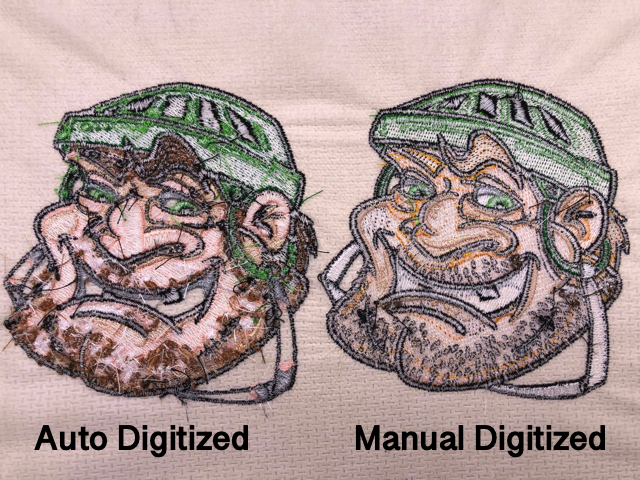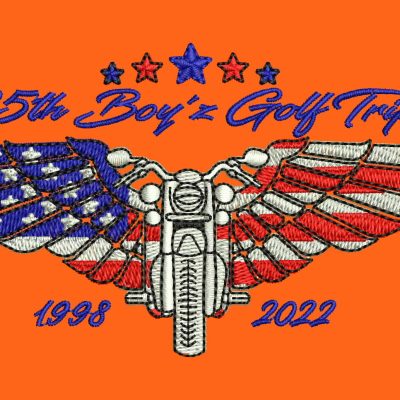Simplifying the Art of Embroidery Digitizing: Step-by-Step Overview
Needlework digitizing is a precise craft that requires accuracy and creativity. As innovation proceeds to breakthrough, the digitization process has actually ended up being extra accessible, allowing lovers to bring their detailed layouts to life effortlessly. In this guide, we will certainly unwind the intricacies of embroidery digitizing, breaking down each action methodically to improve the procedure and equip both novices and experienced embroiderers alike. Remain tuned to find just how you can streamline this intricate art type and transform your innovative visions right into beautifully embroidered masterpieces.
Recognizing Embroidery Digitizing Software Program
Needlework digitizing software functions as a critical tool for transforming elaborate styles into electronic formats compatible with needlework devices, helping with accurate sewing and personalization. This customized software program allows customers to import numerous photo data layouts, such as JPG or PNG, and transform them right into embroidery machine-readable layouts like DST, EXP, or PES - Digitizing for Embroidery. By utilizing attributes like stitch editing and enhancing, underlay options, and thread color choice, digitizing software allows customers to manage every aspect of the design process
In addition, advanced embroidery digitizing software program provides tools for creating complex designs, readjusting stitch density, and incorporating elaborate details. Customers can likewise sneak peek the design before stitching it out, making certain precision and reducing mistakes. Furthermore, lots of software application give automatic features that assist simplify the digitizing procedure, saving time and effort.
Comprehending the capacities of needlework digitizing software application is necessary for attaining premium outcomes in embroidery jobs. By mastering this device, embroidery fanatics and experts can unleash their creative thinking and bring complex layouts to life with precision and effectiveness.

Selecting the Right Layout File
After familiarizing on your own with the capacities of needlework digitizing software program, the following essential action in the process is picking the best style data for your job. Digitizing for Embroidery. When picking a design declare embroidery digitizing, it's essential to think about the complexity of the design, the size of the end product, and the sort of fabric you will certainly be collaborating with
For intricate designs with fine information, a high-resolution picture or vector documents is recommended to make certain that the needlework machine can properly recreate the style. Additionally, the size of the end product plays a significant role in picking the ideal layout file. Bigger designs might need higher resolution documents to preserve quality and sharpness.
Moreover, the kind of material you will certainly be stitching on affects the choice of design data. Various fabrics might call for modifications in the style data to guarantee that the stitches are properly straightened and the style looks like planned. By meticulously picking the right layout documents based upon these aspects, you can establish on your own up for a successful needlework digitizing process.
Digitizing Devices and Methods
Utilizing specialized Extra resources software application and accuracy methods, digitizing devices are important in changing elaborate designs right into embroidery-ready files. Embroidery digitizing software application, such as Wilcom, Hatch, or Embrilliance, gives the required system to transform artwork right into stitch data. These programs offer attributes click for more like stitch modifying, padding choices, and text devices to ensure the design equates effortlessly onto fabric.
One of the essential strategies in digitizing is developing a clear course for the embroidery machine to comply with. This involves digitizing each aspect of the style with precision, figuring out stitch kinds, densities, and instructions. By using tools like digitizing tablets or software-specific plugins, embroiderers can achieve a high level of accuracy in their digitized styles.
In addition, grasping the art of underlay sewing is essential for producing quality embroidery. Underlay stitching supports the textile and produces a structure for the layout, making certain that the end product is both visually attractive and lasting. By comprehending these digitizing tools and methods, embroiderers can boost their craft and bring elaborate layouts to life with accuracy and effectiveness.
Customizing Stitch Kinds and Directions
Having actually developed a foundation in digitizing tools and techniques, a crucial aspect in advancing embroidery workmanship depends on customizing stitch kinds and directions with accuracy and objective. The selection of stitch kinds can dramatically influence the total appearance and structure of the stitched layout. Satin stitches, recognized for their smooth and glossy finish, job well for developing borders and message. On the other hand, fill stitches are perfect for covering larger locations effectively. By tactically combining these stitch kinds, embroiderers can attain depth and dimension in their layouts.
In addition, the instructions of stitches plays a crucial duty in boosting the aesthetic allure of the final embroidery. By exploring with different stitch angles and patterns, embroiderers can bring their layouts to life with remarkable detail and intricacy.
Screening and Refining Your Digitized Style
To guarantee the precision additional resources and quality of your digitized style, detailed screening and improvement are important action in the embroidery digitizing procedure. When you have actually completed the digitization of your design, it is vital to check it prior to continuing with the real embroidery. Checking enables you to identify any type of prospective issues such as string breaks, stitch density problems, or design distortions that might influence the outcome.

After screening, it is very important to fine-tune your digitized style based upon the comments from the examination sew-out. This might entail tweaking sew settings, readjusting densities, or making changes to the overall style to achieve the wanted end result. By repeating with testing and refinement, you can tweak your digitized design to excellence prior to progressing with the real needlework process.
Final Thought
In verdict, mastering the art of embroidery digitizing calls for a thorough understanding of the software program, picking the ideal style data, using digitizing tools and methods, tailoring stitch types and directions, and testing and fine-tuning the digitized design. By adhering to these actions, embroiderers can streamline the digitizing process and produce top notch stitched designs with accuracy and effectiveness.
Comments on “Expert Digitizing for Embroidery: High-Quality Styles”